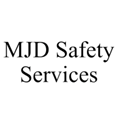
Intro to Safety
Hello there, and welcome to MJD Safety Services! My name is Michael Dudek, but you can call me Mike. I’m an occupational safety and health consultant from Middletown, New Jersey, but to all of the construction company employees I’ve inspected, trained, taught, cajoled, and, yes, disciplined, I’m the Safety Man.
How did I become the Safety Man? I’m glad you asked.
In the early 1990s, I was a journeyman millwright and certified welder at the General Motors plant in Linden, New Jersey. Part of my job there involved fixing the occasional breakdown in the 450-degree paint ovens. How did my fellow millwrights and I fix these breakdowns? Well, we’d have to go inside. Into these enormous ovens, which, again, reached temperatures of 450 degrees Fahrenheit.
Every minute these ovens were down cost the company money in the form of lost production time and damaged material. To save time—and money—we would need to enter the ovens while they were hot. Again, because it bears repeating, these ovens could be as hot as four hundred and fifty degrees.
The heat would be bad enough, right? On top of that, though, we had to deal with the fumes emanating from the painted car bodies inside the ovens, which made it tough to breathe. We figured out a workaround, a way to deal with the fumes. Before we’d enter the oven, we’d take a deep breath. Seriously. That was it. We would hold our breath, enter the ovens, work for as long as we could, come out to breathe, and then repeat the process.
You probably won’t be shocked to hear that this method wasn’t exactly flawless. There would be times when we didn’t make it out of the ovens and we’d need to breathe while still inside. These hot breaths would burn our noses and throats. Consequently, for several days after working in the ovens we would, to a man, complain of body aches, sore throats, running or stuffy noses, and other upper respiratory ailments.
Because I was concerned, I decided to discuss our symptoms with the United Auto Workers’ night shift committeeman in the plant. He passed my concerns on to the UAW/GM plant safety rep. When they saw my concern for my coworkers’ health and safety, as well as my interest in learning, the safety department sent me to Detroit, where I would become a UAW/GM safety and health trainer for skilled trades. I learned how to train my coworkers in things like Rigging Safety, Lock-Out/Tag-Out, Fall Protection, Robotics Safety, Aerial Lift Safety, Fork Trucks, and Confined Space Entry. I didn’t know it then, but this was the beginning of a new chapter in my life.
In 2004 the General Motors plant in Linden closed, and I was out of a job. I put my resume out there, looking for a new millwright position. Call after call came in, but they weren’t looking for my millwright’s skills. No, these folks were looking for my safety expertise. I took a few Occupational Safety and Health Administration classes at UMDNJ (now Rutgers) School of Public Health OSHA outreach. I’ve been the Safety Man ever since.
My safety career began in earnest in the PSE&G power plants in Jersey City and Trenton, NJ. I’ve worked in modular building, heavy highways and bridges, and commercial and residential construction. I’ve also taught OSHA classes for workers all over the United States. To top it all off, in 2011, I started my own business, MJD Safety Services. It’s my mission to provide affordable safety and health compliance for small businesses, including construction and manufacturing companies and other safety groups.
So that’s me. Nice to meet you.
In this blog I’m going to answer some questions about what I do. A few examples:
“What is safety?”
“Why do we (workers, employers, property owners) want safety?”
“Who is responsible for safety?”
“What is risk?”
“How can we minimize risk in the workplace?”
Stuff like that.
Stick around and you’ll learn all about different aspects of the safety industry:
The history of OSHA
The most common killers in the construction industry
The proper use, maintenance, inspection, and use of tools and Personal Protective and Lifesaving Equipment
Health hazards in the workplace
Dangerous tasks you might encounter at work and what you can do to make them safer
Sound good? Good.
I’ve been doing this for a while, and I’ve also got some stories to tell. As you might imagine, not everyone is happy when they see the Safety Man show up at their worksite. I’ve had my share of battles with angry and belligerent project managers and company owners, and I’ll tell you about some of them—win, lose, or draw. More than that, I’ll explain why safety is important. It’s not just arbitrary rules that some governmental agency came up with to choke businesses—it is literally the difference between life and death.
I take safety seriously, because there are serious consequences when people don’t. I’m the Safety Man, and when I show up at your job I’m not there to bust your chops or to make your life difficult—thought I know it seems that way sometimes. I’m there to make sure that you get home to your friends and families at the end of the day.
See ya next time, when we’ll be tackling some of the general questions in the safety field. Call it “Safety 101”, if you will. Have a good one, and be safe!